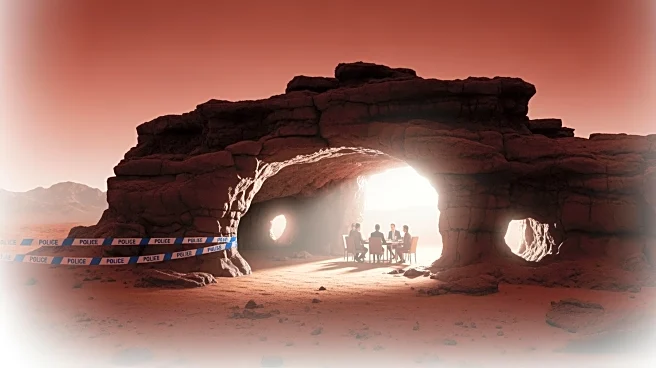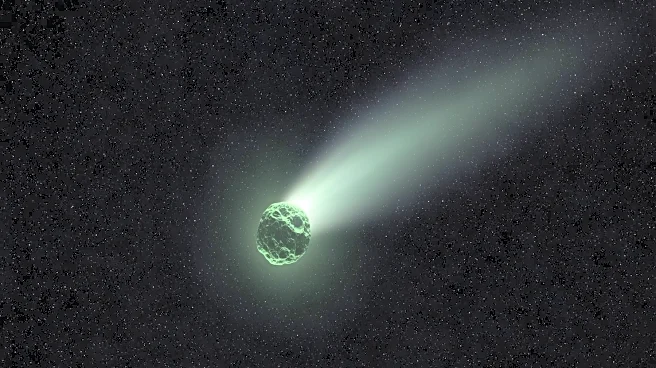What's Happening?
NASA's Mars Global Surveyor has identified eight possible cave openings on Mars that may have been formed by ancient water flows, rather than volcanic activity. These caves, located in the Hebrus Valles
region, are believed to have been carved by ancient floods and contain high levels of carbonate and sulphate minerals, which typically form in the presence of water. The findings suggest these caves could be promising sites to search for evidence of past life on Mars, as they may have provided a sheltered environment with water, essential for life.
Why It's Important?
The discovery of water-formed caves on Mars is significant as it provides new potential sites for the search for past life on the planet. If life ever existed on Mars, these caves could preserve traces of it, offering insights into the planet's history and its potential for habitability. The presence of water is a key factor in the search for extraterrestrial life, and these caves could help scientists understand the conditions that might have supported life on Mars billions of years ago.
What's Next?
Future missions to Mars may focus on exploring these caves to gather more data and potentially sample the minerals and structures within them. This could involve sending rovers or drones equipped with advanced scientific instruments to analyze the cave environments and search for signs of past life. The findings could also influence the design of future Mars missions, prioritizing areas with evidence of ancient water activity.
Beyond the Headlines
The identification of these caves challenges previous assumptions that most Martian caves were formed by volcanic activity. It opens up new avenues for research into the planet's geological history and the role of water in shaping its surface. Understanding the formation and characteristics of these caves could also provide insights into similar processes on Earth, enhancing our knowledge of planetary geology.












